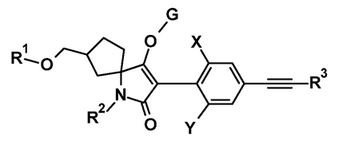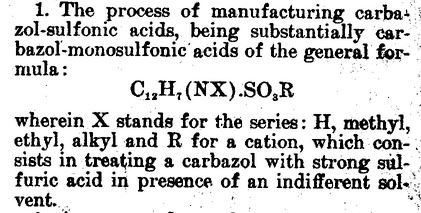A little over one hundred years ago, on 9 January 1923, Eugene Markush filed a patent application for a pyrazolone dye, and used a particular combination of six words that revolutionised the writing of claims, and with it, the drawing of chemical formulae, forever.
The words, “selected from the group consisting of”, have persisted, and now reach into claims for all technologies, not just the field of chemical compounds. Markush claims, i.e. claims of this type, have been named in his honour.
For those unfamiliar with the term, a Markush claim recites a group of integers in a claim which may be considered alternatives to one another.
The Markush claim as it developed in the US (https://www.uspto.gov/web/offices/pac/mpep/s2117.html) used the specific wording “selected from the group consisting of”. The claim language must positively close the group from any other members, and specifically to distinguish it from groups that maybe said to “comprise or include” certain members, which of course effectively does not limit the group at all.
In most other jurisdictions (https://manuals.ipaustralia.gov.au/patent/annex-aa—markush-claims), a Markush claim can be successfully pursued with alternative language such as “selected from the group”, “selected from”, “one or more of” usually being accepted, since on a plain reading, these do not include any unspecified members. Attempts to pass off a claim using the phrase “selected from the group including…”, which deliberately opens up the group, as being in the Markush style however would be likely to attract an objection in any jurisdiction.
Who was Eugene Markush?
Unfortunately, it remains a question largely unanswered. He was born in Hungary and emigrated to the United States in his mid-20s, where, in 1919, he founded the Pharma Chemical Corporation, making dyestuffs.
PatBase has 33 patent families attributed to Markush or the Pharma Chemical Corp, all for chemical dyes. The earliest is US1506316, which is the one containing those six words, with the remainder filed on a regular basis over the following 35 years until the company was sold to Bayer in 1958. Eugene Markush is not listed as an inventor after that time and appears to have retired. He was by then, 70 years old.
He died in 1968.
Claim 1 of US1506316 reads:
1. The process for the manufacture of dyes which comprises coupling with a halogen-substituted pyrazalone, a diazotized unsulphonated material selected from the group consisting of aniline, homologues of aniline and halogen substitution products of aniline.
That claim was considered to lack specificity during examination but on appeal was allowed by the US Commissioner of Patents. To modern eyes, there seems to be little problem with the Markush formula but Markush seems to have been lucky to get away with “homologues of aniline”.
The elements of a Markush group are alternatives which have a common property or activity, and have a common structure. This commonality is very apparent when the group is say halogens or transition metals, but considerable user definition is possible. Particularly in the pharmaceutical field, Markush formulae are chemical formulae with a generic substituent representing the group that is being selected from. Generally, these generic substituents are known as R groups, and where a claim has multiple groups, take the form R1, R2, R3, etc, but just about anything is acceptable as long as it’s not a known chemical symbol.
Take this example from WO2020187626 that uses R, G, X and Y.

Markush’s first application didn’t use a generic formula, but he did get around to it eventually. This is from his third application, US1986276. It wasn’t filed until 1932, some eight years after his first patent was granted, so perhaps not the first generic formula ever used.

In fact, generic formulae were used before Markush’s 1923 patent application.
Hoechst AG were using them ten years before Markush. Here’s an example from US1128369 (1913).

Here, we see two generic labels, including the now ubiquitous R group, and further, the description for the X group takes almost the same form as Markush. The “selected from the group consisting of” is missing, but the group is not specifically open ended and the ‘AND’ before ‘alkyl’ is also missing.
Other formulations include “with sodium amine compounds of the general formula R – NH – Na (R – aryl, alkyl or heterocyclic base radical such as pyridyl or quinolyl)” from DE374291 (1914), and “chromium alkali oxalates of the general formula Cr R (C2O4)2 in which R stands for K, Na or NH4”, from GB104083 (1916).
We can’t find any evidence that Markush was not the first to use the words “selected from the group consisting of”, but it’s clear he wasn’t the first to use the concept of ‘genericising’ a claim to choose a value from a group of like values.
Rightly or wrongly, history has chosen Eugene Markush as the originator of this general form of claim construction. He may not have been the first, but perhaps he was the most clear and succinct and he certainly found a winning formula to secure acceptance of this kind of claims.
This article was first published in the Australian Intellectual Property Law Bulletin Vol 36 No 1 2023

